The House of the Massacre at Ponce
Introduction
Text-to-speech Audio
Images
The events happened around this house. This is how the museum looks now.
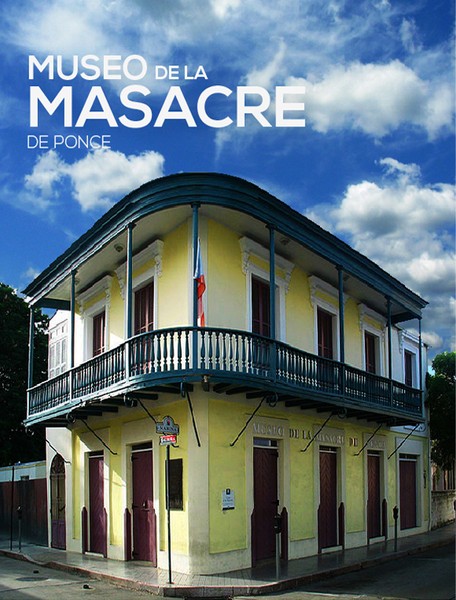
During the march, heavily armed police blocked the parade from front and back restraining the participants.
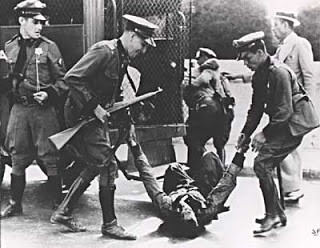
This painting is a visual representation of the Massacre at Ponce. It represents the epitome of the struggle on the island of Puerto Rico for independence.
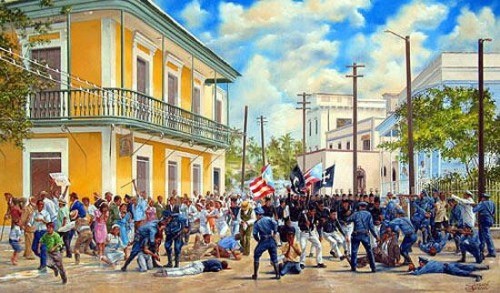
This image demonstrates how violent and cruel the march was on March 21, 1937.
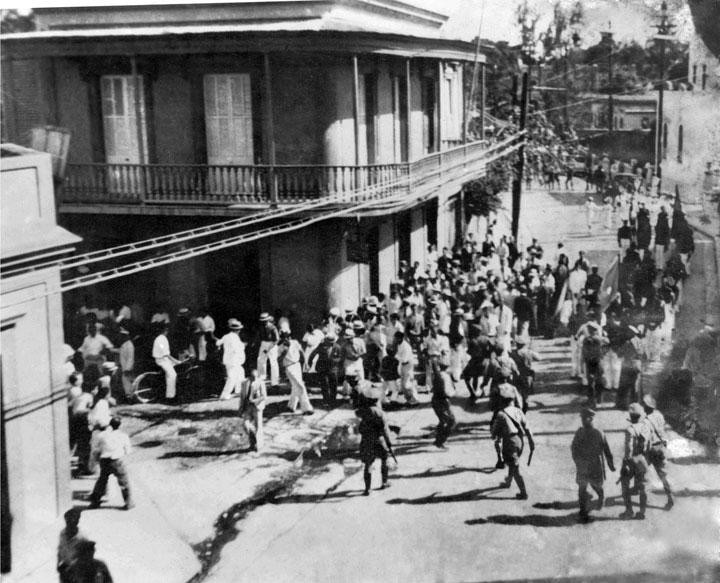
Pedro Albizu Campos was the main leader of the Nationalist Party. He addressed the people, urging them to join the fight for independence.
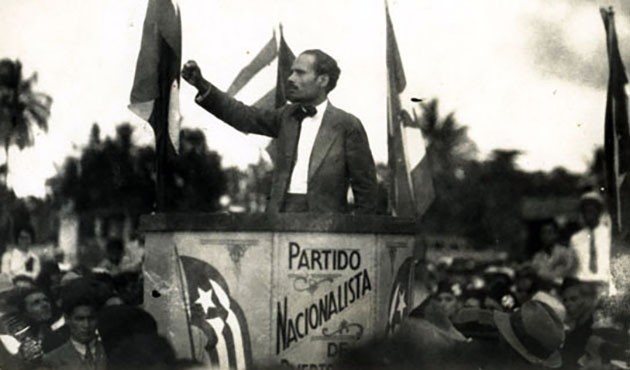
Backstory and Context
Text-to-speech Audio
The House of the Massacre at Ponce serves as a testimony of what the Nationalist Party endured on March 21st of 1937. This Museum is located in the street where the massacre took place. The Massacre at Ponce was the most violent episode to ever occur during the 20th century in Puerto Rico. The 1930s was known as the worst decade for the island. Puerto Rico was going through a tough political period in which the citizens of the island didn't agree with their governor, Blanton Winship. Understanding the backstory of the Massacre at Ponce helps to know the people that founded the Nationalist Party of Puerto Rico. Their main mission and priority were to unite forces with all the citizens in order to obtain the island’s independence.
The Nationalist Party was founded on September 17 of 1922 by José Coll, and Pedro Albizu Campos was the president. José Coll was born in Catalán, a region in Spain with its own ethnic and cultural identity. He was an attorney, a politician and a writer. In 1920, he presided over the Nationalist Association. This Association was made up of a group of members of the Union Party of Puerto Rico that campaigned for the independence of Puerto Rico. However, in 1930 José Coll left the party due to disagreements with Pedro Albizu Campos. This led to Pedro Albizu Campos being named the president of the Nationalist Party in 1933. He defined the main goals of the party in terms of addressing the social and political injustices that were happening on the island during this time that had their history in imperialist exploitation. His plans were to restore the Republic of Puerto Rico immediately and to take over the Antillean Confederation, including the Republic of Haiti, and the regions covered by the Ibero-American Union, and to work towards the hegemony in the New World of the Ibero-American nations. These intentions would define Puerto Rico as a political entity which was his main priority. According to Pedro Albizu Campos, “Nationalism’s main intention was to rescue its sovereignty.” The Nationalist Party worked hard to persuade the citizens of Puerto Rico to fight for their independence. By encouraging men and women to be part of their Association, they were able to create a strong foundation. Pedro Albizu Campos said at a conference in 1936: “With a gentle gesture, we believe that behind that will come to a kind action. But the world is not constituted in this way, and our trust has cost us the total ruin of the homeland.”
During the 1930s, the government of Puerto Rico responded directly in response to the Nationalist Party. The police chief of Puerto Rico, Francis E. Riggs, said that if nationalist agitation kept on, there would be “War to death against all Puerto Ricans.” Ironically, this led the Nationalist Party to reinforce their militant activities. Pedro Albizu Campos and other important figures were arrested because of conspiring to overthrow the United States government. To have a stronger foundation, the Nationalist Party formed a military group called the Cadets of the Republic, who were persecuted by the police and by the government. On March 21st of 1937, a peaceful march was planned by the Cadets of the Republic to commemorate the abolition of slavery. The governor of Puerto Rico at that time, Blanton Winship, denied permission for this event to happen. The Cadets of the Republic viewed this as a violation of their right to freedom of expression, and they decided to go ahead with the event. However, fifteen minutes into the march, the police started to shoot taking the lives of 19 people and injuring hundreds of participants.
This event was a clear representation of the hatred and the enmity between the government of Puerto Rico and the Nationalist Party at this time. After the massacre occurred, an investigation was led by the United States Commission on Civil Rights. The findings of this investigation placed the blame for the massacre squarely on the United States appointed governor of Puerto Rico, Blanton Winship. The injustice of their treatment, in addition to the human tragedy of the march, led to various protests and manifestations against the government of Puerto Rico guided by members of the Nationalist Party. The House of the Massacre at Ponce manifests of how the civil rights of these citizens of Puerto Rico were violated during this crucial period of history. It also shows through the numerous documents in the collection how the Nationalist movement impacted the constitution and Puerto Rican history.
The House of the Massacre at Ponce Museum is listed in the U.S. National Register of Historic Places. This two-story museum has a great significance for the history of Puerto Rico because it contains valuable documents that correspond to the period in which the Nationalist Party of Puerto Rico fought to obtain independence. There are many archives and pictures of the people that were part of the Nationalist Party, like José Coll, the Cadets of the Republic, and other important figures. The museum underwent remodeling in 2013 and reopened again to the public in 2020, but after the earthquake that shook the island on January 7th of 2020, the museum suffered some damage. Despite this minor damage, the museum remains open and stands as a testament to recognize how the Nationalist Party of Puerto Rico recognized and regretted the economic and social hardships of the people in their colonial situation. The activism of the Nationalist Party is an important part of Puerto Rican history, and events like the Massacre of Ponce highlight the hardships that the citizens of Puerto Rico lived through.
Sources
Brau, R., & Enrique. (1950) Albizu acusado de cinco delitos. El Mundo (San Juan, P.R.)
Fernandez Hodar, J. J. (1986). El proceso de transculturación en Puerto Rico: El Partido Nacionalista como instrumento de liberación (1898-1965) (doctoral thesis). Universidad de Valencia, Spain.
Lecours, A., & Vézina, V. (2017). The politics of nationalism and status in Puerto Rico. Canadian Journal of Political Science, 50(4), 1083-1101. doi:10.1017/S0008423917000488
Meyer, G. J. (2011). Pedro Albizu Campos, Gilberto Concepcion de Gracia, and Vito
Marcantonio: Collaboration in the cause of Puerto Rico independence. CENTRO: Journal of the Center for Puerto Rican Studies, 23(1).
Power, M. (2013). Nationalism in a colonized nation. Memorias: Revista Digital De Historia y Arqueología Desde El Caribe, 10(20), 2-20.
Vargas Canales, Margarita Aurora. (2010). La revuelta también vino de la caña: El caso de Puerto Rico. Latinoamérica. Revista de estudios Latinoamericanos, (50), 81-101.
https://stayatsolace.com/museo-de-la-masacre-de-ponce/
http://mtwsfh.blogspot.com/2008/11/1937-1938-murdering-workers-again.html
https://gomezbiamon.wordpress.com/2013/03/21/la-masacre-de-ponce-no-sera-olvidada/
https://libcom.org/history/ponce-massacre-1937
https://www.motherjones.com/media/2015/04/puerto-rico-independence-albizu-campos/
